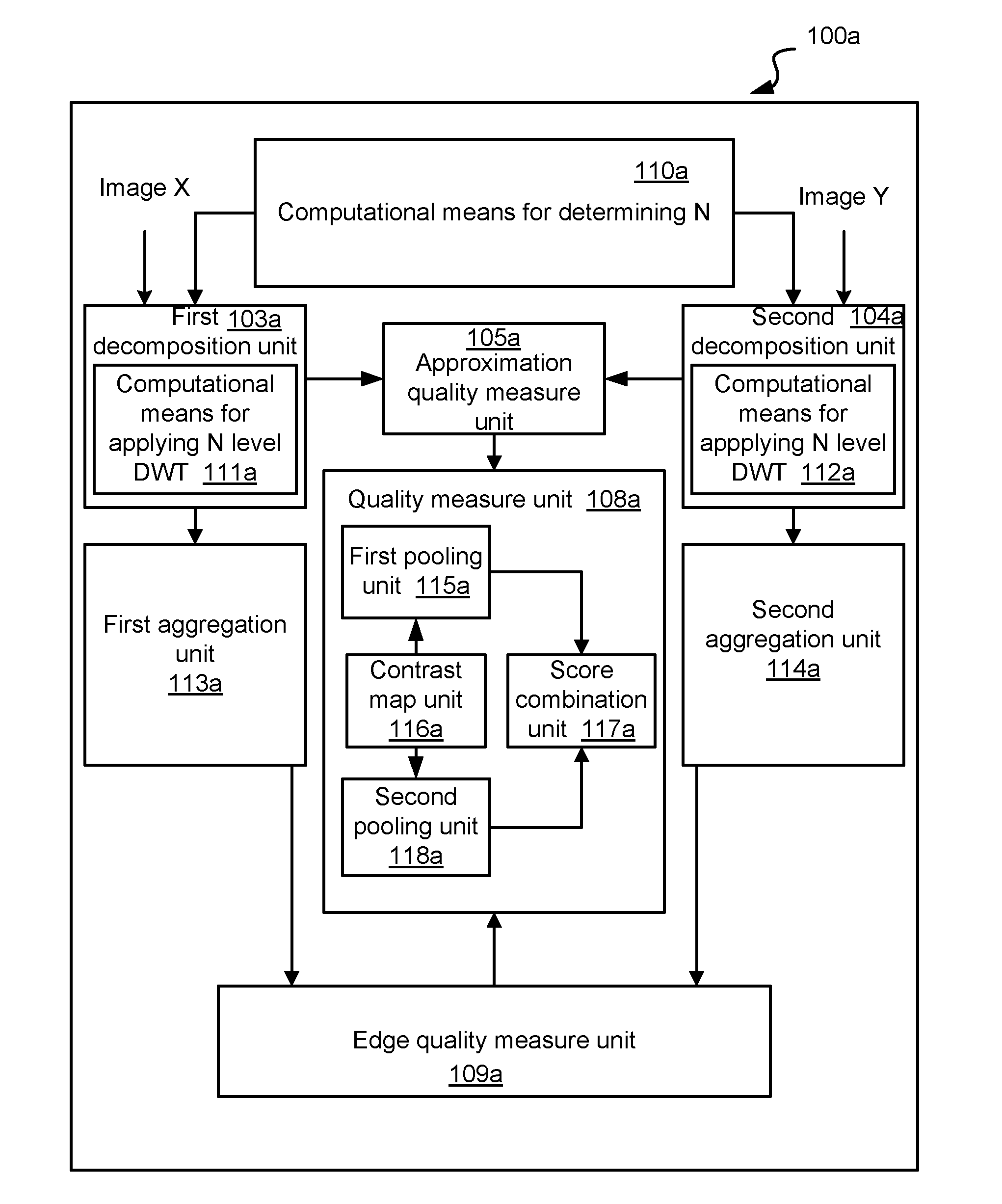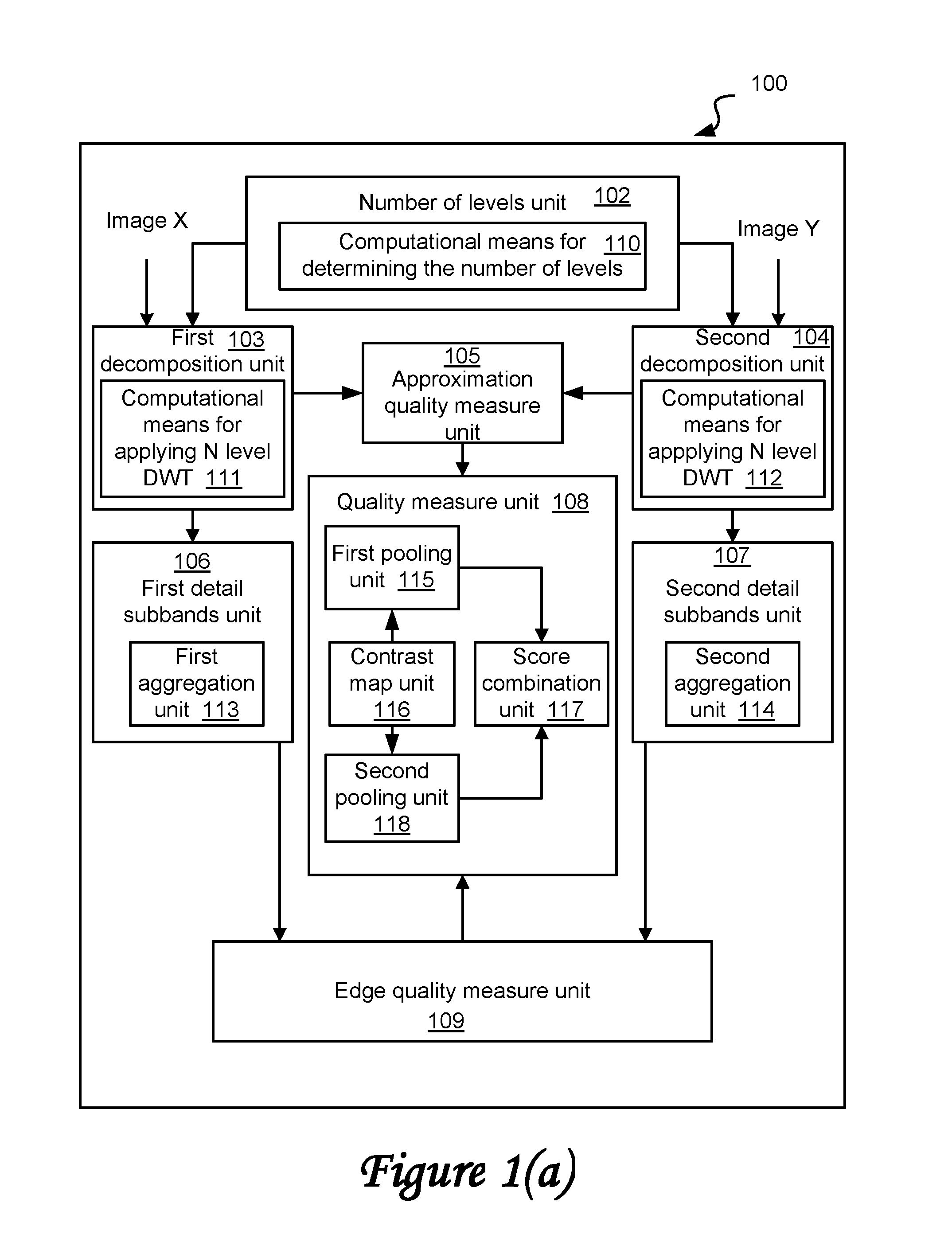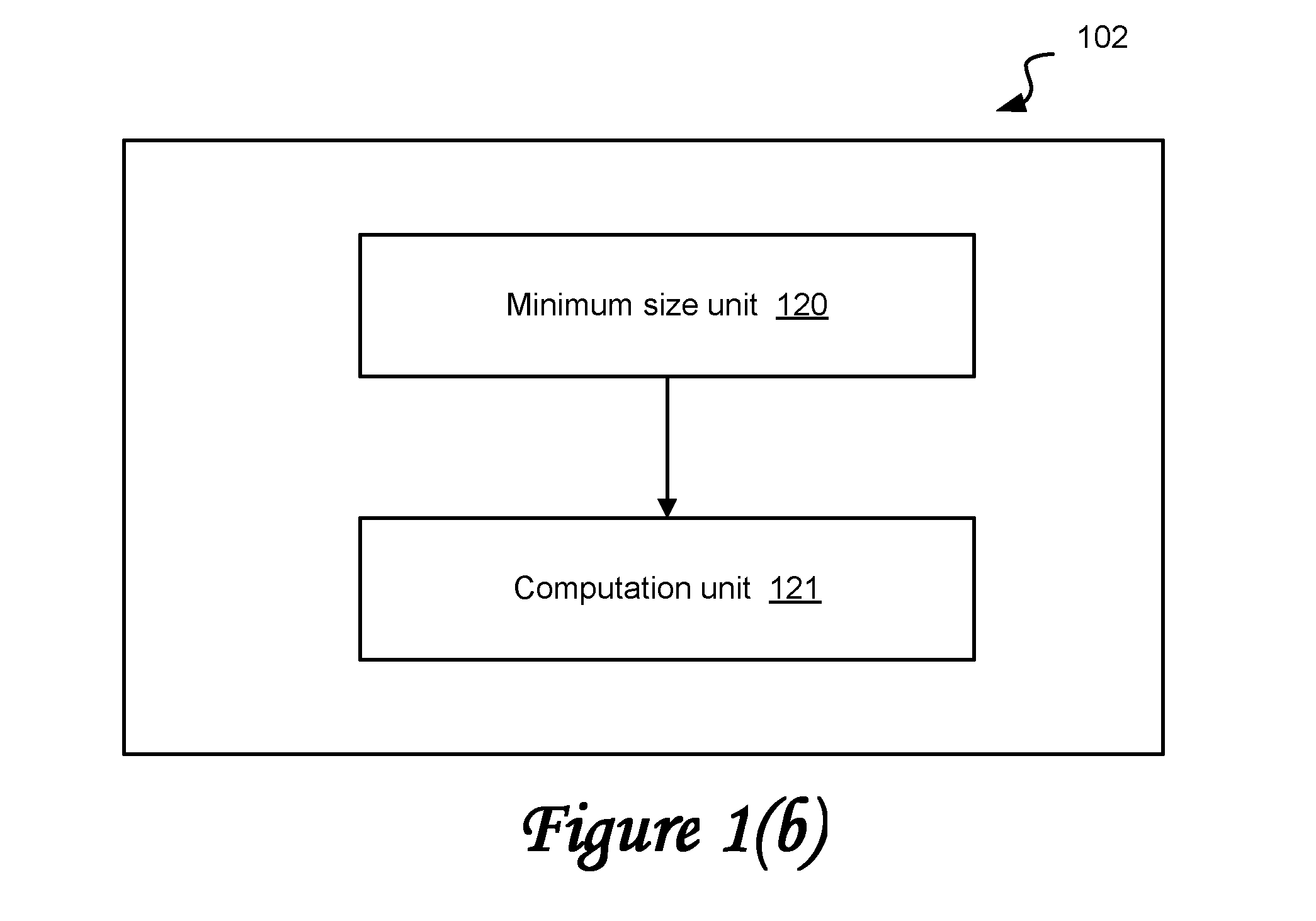Method and system for determining a quality measure for an image using a variable number of multi-level decompositions
- Summary
- Abstract
- Description
- Claims
- Application Information
AI Technical Summary
Benefits of technology
Problems solved by technology
Method used
Image
Examples
Embodiment Construction
Terminology
[0096]Contrast map: weighting function for automatically assigning weights to different regions of an image or sub-image based on their visual importance.
[0097]Differential Mean Opinion Score (DMOS): A DMOS value indicates the subjective quality loss of the distorted image compared to its reference image.
[0098]Discrete wavelet transform: transform applied to an image to separate its low frequency components from its high frequency components.
[0099]Edge map: characterizes an estimate for the edges of an image.
[0100]Gaussian sliding window: a set of coefficients with unit sum and Gaussian probability distribution.
[0101]Linear Correlation Coefficient (LCC): Linear or Pearson Correlation coefficient is the measure of dependence between two quantities. It is obtained by dividing the covariance of the two variables by the product of their standard deviations. In the proposed method LCC indicates prediction accuracy.
[0102]Multiresolution decomposition: a process (or transform) t...
PUM
 Login to View More
Login to View More Abstract
Description
Claims
Application Information
 Login to View More
Login to View More - R&D
- Intellectual Property
- Life Sciences
- Materials
- Tech Scout
- Unparalleled Data Quality
- Higher Quality Content
- 60% Fewer Hallucinations
Browse by: Latest US Patents, China's latest patents, Technical Efficacy Thesaurus, Application Domain, Technology Topic, Popular Technical Reports.
© 2025 PatSnap. All rights reserved.Legal|Privacy policy|Modern Slavery Act Transparency Statement|Sitemap|About US| Contact US: help@patsnap.com



